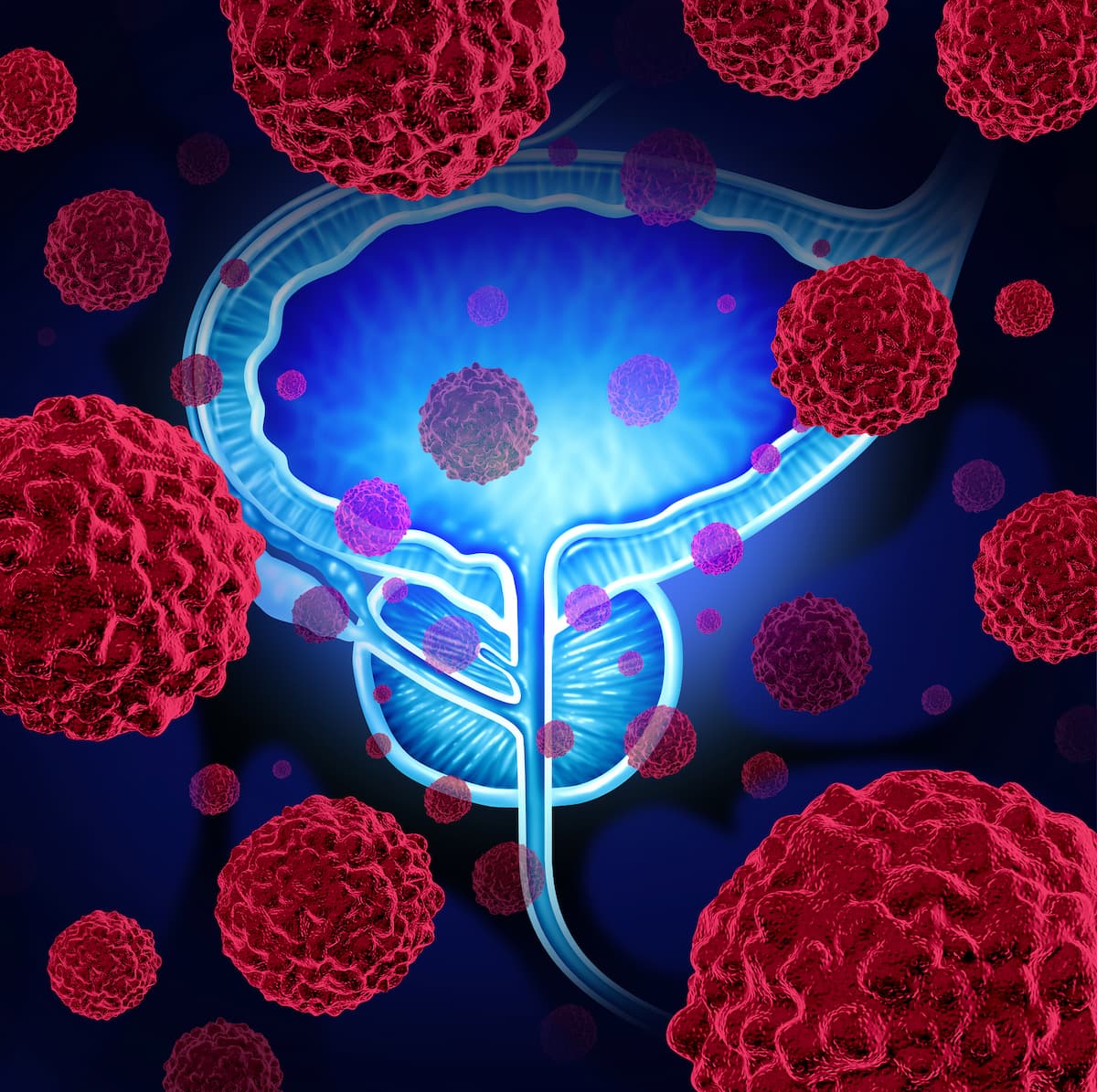Nivolumab/RT Improves Biochemical Recurrence Outcomes in Prostate Cancer
Phase 2 data support further evaluation of nivolumab plus standard radiotherapy in patients with Gleason grade 5 prostate cancer.
"...The addition of [nivolumab] to trimodality therapy was associated with improvements in [FFBR] in [patients] with high volume GG5 prostate cancer as compared with the predefined historic control rate and also the contemporary controls despite having higher baseline rate of metastatic disease and no elective nodal irradiation,” according to presenting author John Michael Bryant, MD.

Combining nivolumab (Opdivo) with standard-of-care radiotherapy produced significant improvements in freedom from biochemical recurrence (FFBR) among patients with Gleason grade group 5 (GG5) prostate cancer, according to findings from a phase 2 trial (NCT03543189) presented at the 2024 American Society for Radiation Oncology Annual Meeting (ASTRO).
At 2 years, the FFBR rate was 90.3% among patients who received nivolumab plus radiotherapy compared with a historical control rate of 75% (P = .025). Additionally, data showed a median FFBR of 58.6 months with nivolumab-based treatment, and investigators observed no grade 4 or higher toxicities. At 3 years, the FFBR rate was 90.4% among patients in the nivolumab arm compared with 68.8% in a contemporary control cohort who received SOC radiotherapy (P = .027).
Based on adjusted multivariate analysis, the addition of nivolumab significantly correlated biochemical recurrence outcomes compared with SOC alone (P = .008). Regarding other factors in this multivariate analysis comparing outcomes with those observed in the contemporary control cohort, stage IVA disease (P = .022) and stage IVB disease (P = .031) were significantly associated with biochemical recurrence outcomes.
“The key takeaway from this portion of the study was that the addition of [nivolumab] to trimodality therapy was associated with improvements in [FFBR] in [patients] with high volume GG5 prostate cancer as compared with the predefined historic control rate and also the contemporary controls despite having higher baseline rate of metastatic disease and no elective nodal irradiation,” presenting author John Michael Bryant, MD, chief radiation oncology resident at the H. Lee Moffitt Cancer Center and Research Institute in Tampa, Florida, said.
Among those with a pathologic response in the nivolumab cohort, investigators classified patients as having an early pathological response or a late pathological response. An early pathological response was defined as having 1 or fewer positive cores on transperineal six-core prostate biopsies following the first fraction of high-dose rate (HDR) brachytherapy. A late pathological response consisted of having more than 1 positive core on transperineal six-core prostate biopsies following the same treatment period. According to Bryant, patients with a late pathological response and eventual disease progression generally had multiple metastatic sites compared with early responders, who tended to have a single metastatic site at the time of progression.
Findings from a biomarker analysis showed that the Ricketts Gene Signature significantly correlated with both early pathological and radiographic responses. This signature was made up of 13 genes associated with immunosuppression, which included but was not limited to CD274, IDO1, FASLG, CTLA4, PDCD1, and LAG3. Based on adjusted multivariate analysis, a low risk for having the Ricketts signature was the only factor that had a significant association with response outcomes (P = .04).
“Early pathologic response, characterized by a lower residual tumor burden and higher immune marker expression, was associated with better clinical outcomes,” Bryant said. “The Decipher Ricketts Immunosuppression score is a potential biomarker that may help with patient selection in the future for this type of therapy.”
Investigators conducted this phase 2 trial at the H. Lee Moffitt Cancer Center & Research Institute. Eligible patients had high volume localized or oligometastatic GG5 prostate cancer. The trial initially included 34 patients, with 2 ultimately being withdrawn from the analysis.
Patients were assigned to receive 240 mg every 2 weeks for a total of 4 doses in combination with standard trimodality therapy consisting of androgen deprivation therapy, external beam radiotherapy, and brachytherapy. The trial’s primary end point was 2-year FFBR of 90% or greater.
Outcomes among patients who received nivolumab-based therapy were compared with those of an external contemporary control cohort including 45 patients who received SOC radiotherapy at the same institution from January 2013 to November 2021. Investigators retrospectively identified patients who met all enrollment criteria for the study and were actively followed for a minimum of 2 years.
Regarding baseline characteristics, Bryant noted that patients in the nivolumab cohort tended to be younger than those in the contemporary control cohort (P = .018). Additionally, a higher proportion of patients in the control group had stage IIIC disease (93.3%) compared with those in the nivolumab cohort (75.0%; P = .041). Data also showed that 84.4% of patients who received nivolumab had no nodal irradiation field compared with 55.6% in the control group (P = .008).
“These data from the study ultimately support larger randomized controlled trials in order to confirm the findings [from] this early phase 2 [study],” Bryant concluded.
Disclosures: Bryant cited no disclosures.
Reference
Bryant JM, Sandoval ML, Putney R, et al. Combination of nivolumab immunotherapy with radiation therapy and androgen deprivation therapy in the management of Gleason Group 5 prostate cancer: final analysis of a phase 2 trial. Presented at the 2024 American Society for Radiation Oncology Annual Meeting (ASTRO); September 29 – October 2, 2024; Washington, DC. Abstract 187.